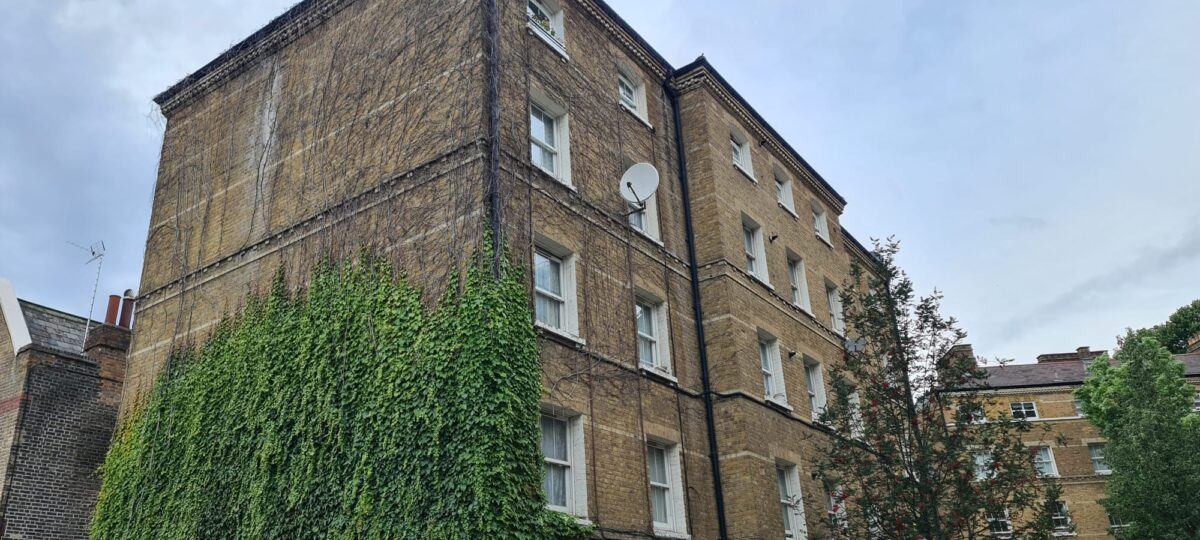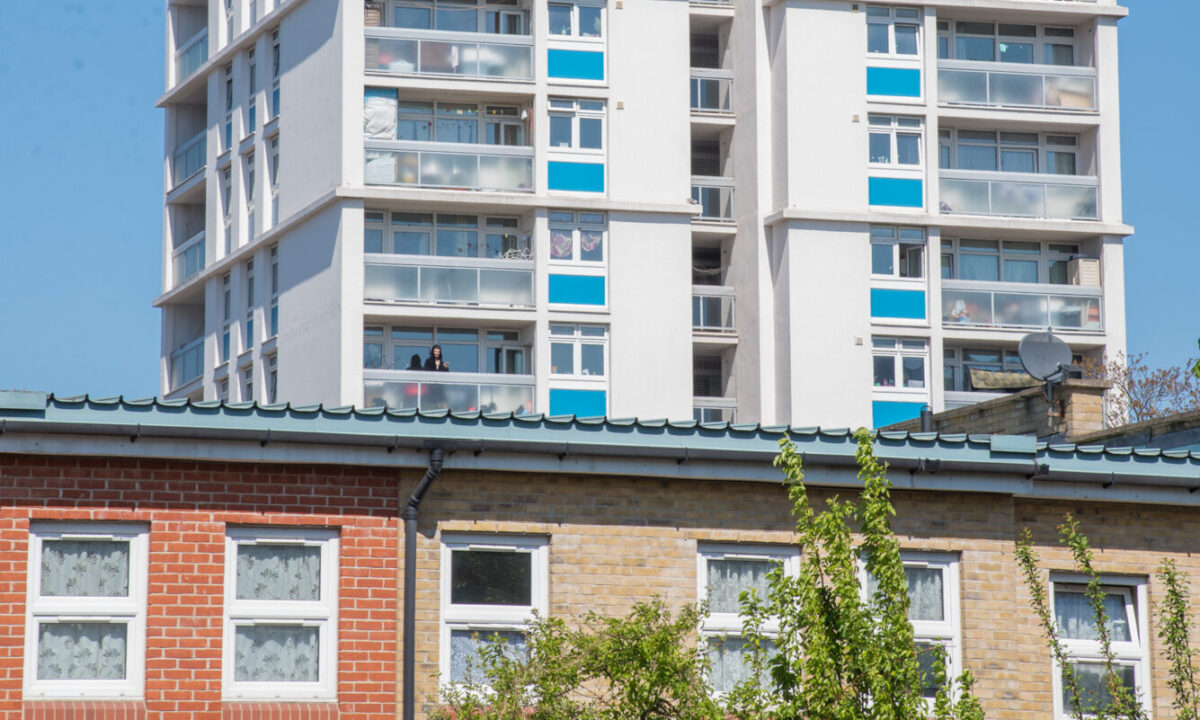By its very nature domestic abuse is a housing issue, directly impacting on a survivor’s right to a life free of violence and abuse and the right to a safe and stable home. Domestic abuse is one of the leading causes of homelessness amongst women, and is currently the second most common reason for households approaching English councils for homelessness relief. For 70% of women who responded to a survey by Women’s Aid, fear of homelessness and housing insecurity has prevented them from leaving their abuser. Once made homeless, many survivors face additional barriers when they need to leave their local area to achieve safety, including gatekeeping and local connection tests, and the loss of secure social housing.
The Labour Housing Group’s Labour Manifesto asks as a response to domestic abuse and housing
The Labour Housing Group consulted with the Domestic Abuse Housing Alliance (DAHA)-led National Housing & Domestic Abuse Policy and Practice Group, and the wider domestic abuse and housing sectors to put forward three top priorities for inclusion in the Labour Party Manifesto to respond to the housing needs of survivors of domestic abuse. A further seven recommendations are detailed in our wider consultation response.
- Joint Tenancies: Where survivors of domestic abuse share a joint tenancy with their abuser, it is legally complex and expensive to maintain their tenancy and home when separating from their abuser, and many are often forced to become homeless as a result. We must ensure survivors have the viable option to stay safely within their own home, where it is safe and their choice, and we must place a responsibility on perpetrators to be the ones to leave. DAHA and Women’s Aid Federation England (WAFE), with the support of the wider National Group, housing, and family law experts, have put forward a simplified legal mechanism for the removal of a perpetrator from a joint secure or assured social tenancy with the survivor,. We are encouraged that both Scotland and Wales have passed legislation that improves the legal options for survivors of domestic abuse to maintain their tenancy while the perpetrator is removed, and we would hope that this has set a strong precedent for a future Labour Government to follow.
We urge the Labour Party to include commit to supporting survivors who share a joint tenancy with their abuser to have the viable option to stay safely within their own home and to place the responsibility of leaving on perpetrators.
- Priority Need & Local Connection: With the passing of the DA Act 2021, survivors of domestic abuse were given automatic priority if they are homeless because of their experience of domestic abuse. Yet, there is a growing body of evidence, from charities such as Refuge, that many women across the country still face gatekeeping from local authority homelessness services, and are denied priority need, and access to safe accommodation. In fact, this is the most common issue Refuge’s National Domestic Abuse Helpline staff encounter. Dr. Kelly Henderson, DAHA co-founder, further shared through her ongoing research, not only the practical barriers to women denied immediate accommodation and support through gatekeeping, but also the long- and short-term traumatic impact of these experiences. Many survivors face additional barriers from local authorities who continue to apply a local connection test when allocating social housing. This is contrary to statutory guidance, and disqualifies a significant proportion of survivors who have been forced to an unknown area to become safe.
The Labour Party should make a commitment to protect survivors of domestic abuse by enabling them to access to support and safe accommodation, and to act against local authorities who are not fulfilling their legislative duties.
We also ask that Labour commits to a statutory exemption for survivors of domestic abuse from local connection or residency requirements as part of their qualification criteria for applicants for the allocations of social housing.
- A gender informed homelessness pathway: There is a strong body of evidence which demonstrates that women’s rough sleeping is significantly under-counted and current provision is failing to address and provide for women’s rough sleeping. Women sleeping rough carry the added burden of gender-based violence and abuse before, during, and after their time on the streets. Hiding from harm can mean that women are ‘hidden’ from support services and missing from homelessness statistics. For many the only offer off the streets is to go into mixed accommodation, where women may continue to be exposed to male violence and abuse. Without identifying and responding to women’s experiences of rough sleeping as distinct from men, which requires a distinct response, we will not end rough sleeping.
We advise Labour to include in the Manifesto a commitment to recognise and respond to women’s rough sleeping as a distinct and urgent problem which requires a distinct and urgent response, if the wider ambitions to end rough sleeping for good are to be realised. This must include gender informed homelessness pathway and women-only accommodation offer across the country.
The social housing crisis
These housing needs and issues are inextricably linked to the crisis of a significant lack of social housing. It is the fundamental problem from which many of these complex housing issues arise, and changes to joint tenancies and local connection, for example, while welcome, will be limited without genuinely committing to a new generation of socially rented homes. Based on these findings, we welcome the commitment in the last Labour manifesto to build new social rented homes, and seek the following for the future:
- A continued commitment to building at least 150,000 new socially rented homes a year. This should include sufficient family-size homes.
- A commitment to create a dedicated fund for delivering a variety of affordable housing tenures for domestic abuse victims-survivors, including homes for single people and families, with relevant security measures in place. This will offer people a route out of abuse, and options for long term good quality homes that are safe. In turn reducing the burden on local authorities. We recommend this includes a commitment from Labour to have a set annual target to deliver these homes, and publicly publish outcomes on an annual basis.
Deidre is the Senior Housing Manager at Standing Together Against Domestic Abuse, and also Chair of the National Housing & Domestic Abuse Policy & Practice Group and the Domestic Abuse Housing Alliance (DAHA).
[1] Women’s Aid. (2020) The Domestic Abuse Report 2020: The Hidden Housing Crisis. Bristol: Women’s Aid.
[2] Bowstead, J.C. (2022) ‘Journeyscapes: the regional scale of women’s domestic violence journeys’, People, Place and Policy, 16(3), pp. 219–235. https://doi.org/10.3351/ppp.2022.8332428488. Available at: https://extra.shu.ac.uk/ppp-online/journeyscapes-the-regional-scale-of-womens-domestic-violence-journeys/
[3] National Group Members include: Against Violence & Abuse (AVA), Agenda Alliance, Angelou Partnership, Birmingham & Solihull Women’s Aid, Chartered Institute of Housing (CIH), Commonweal Housing, Crisis, DAHA, The DRIVE Partnership, the Employeer’s Initiative of Domestic Abuse (EIDA), Ending Violence Against Women (EVAW), Generation Rent, Gentoo Housing Association, Hestia, Homeless Link, National Housing Federation (NHF), Peabody Housing Association, Refuge, Resolve ASB, Respect, SafeLives, Shelter, Single Homeless Project, Solace Women’s Aid, Standing Together Against Domestic Abuse (STADA), Women’s Aid Federation England (WAFE)
[4] Briefing on Joint Tenancies and Domestic Abuse: https://www.dahalliance.org.uk/media/11115/joint-tenancies-domestic-abuse-briefing_may2022.pdf
[5] Briefing on Joint Tenancies and Domestic Abuse: https://www.dahalliance.org.uk/media/11115/joint-tenancies-domestic-abuse-briefing_may2022.pdf
[6] https://www.dahalliance.org.uk/media/11113/daha-national-housing-and-da-group_local-connection-consultation-response.pdf
[7] https://www.dahalliance.org.uk/media/11246/letter-to-minister-womens-rough-sleeping-recommendations.pdf
[8] There are now over a million households on the official social housing waiting lists. However, the National Housing Federation’s People in Housing Need report in 2021 stated that the number of people in need of social housing in England has reached 4.2 million, which equates to 1.6 million households, significantly more than on the official waiting lists. In 2021-22, only around 7,500 new social rent homes were built, a decline from 37,700 in 2011-2012. There is wide consensus based on a strong evidence base that we need 90,000 homes for social rent every year for the next fifteen years just to address need* , which will require considerably more government funding than is currently allocated within the AHP. ** Crisis, Housing supply requirements across Great Britain: crisis_housing_supply_requirements_across_great_britain_2018.pdf




